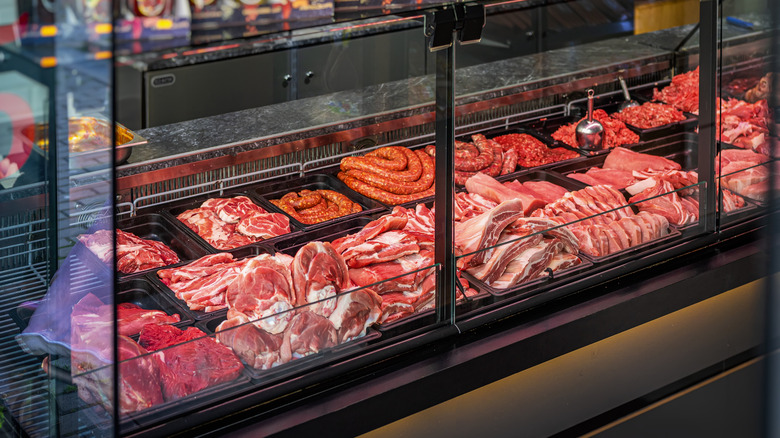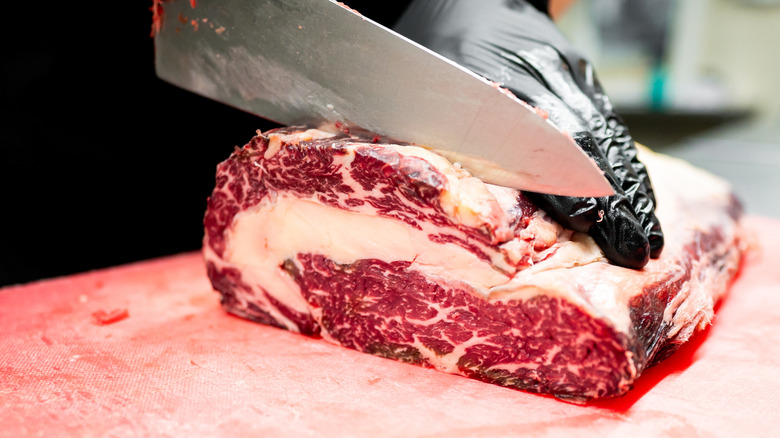The Reason Steak Is Cooked Fast, But Slow-Cooked Beef Gets Tender
Though everyone has their own preferred steak preparations, very few people toss slabs of ribeye into a crockpot the same way they would treat a chuck roast. Food Republic spoke with Chef Erik Meidell, Executive Chef at the Grillroom Chophouse and Wine Bar, to discuss what separates cuts of beef and why they're typically prepared in different ways.
"Steaks, such as the ribeye, filet, and NY [strip], come from muscle groups that are less worked than others, thus leading to tender muscle fibers," Meidell said. "Cuts such as the brisket or chuck roast come from muscle groups that work to support the animal and are thus worked regularly." How much an animal uses a muscle and the connective tissues in it determine how tough a cut ends up, which is why you can toss tender, expensive cuts of steak like filet mignon into a pan for less than ten minutes for a great dinner. The best cuts of meat for pot roast, like chuck or brisket, need long exposure to low amounts of heat to tenderize muscle fibers and break down connective tissues since they come from the shoulder and chest – muscles that get a lot of use. "Steaks, being as naturally tender as they are, don't require prolonged cooking times to break down muscle tissue," Meidell clarified.
Whether you're cooking a steak or a tougher piece of beef, perfect taste lies all in the timing. You want to give them just enough heat to make them tender and flavorful without drying them out. Fortunately, this is quite easy and each cut has a bit of wiggle room in how exactly you should prepare them.
How to prepare a steak versus a tougher cut of beef
Preparing beef is a balance between bringing the center to a food-safe temperature without compromising the exterior. Steaks need high heat and fat to sear the exterior without drying out the center. Tough cuts need low, gentle simmers, so their insides are just as tender as their outer layers.
Chef Erik Meidell takes a novel approach to his steaks. While the rule of threes says to cook a steak over high heat and flip only as necessary, he constantly rotates his in a pan of butter. This browns the dairy fats and brings the steak close to his desired temperature, especially after letting it rest for half of its cooking time. "When you're ready to serve, you can quickly sear it on both sides to warm the exterior," he explained. While this is a relatively long way of preparing a steak, it preserves its juices, flavors, and tenderness while still requiring exponentially less time than preparing a whole roast.
"Braising is the most approachable method to cooking a tougher cut of beef," Meidell said. "Keep it simple and the beef flavors shine, utilizing vegetables and herbs to highlight and deepen the dish." Searing the roast beforehand creates a lovely Maillard flavor, similar to steak, without drying it out. Meidell then recommended placing it in a pan with enough stock until it's almost submerged and then cooking in the oven at 325 degrees Fahrenheit for three to four hours or until fork-tender.


